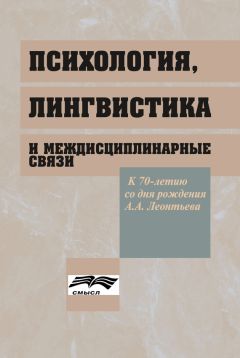32
Denis M. Visual imagery and the use of mental practice in the development of motor skills // Canadian Journal of Applied Sport Science. – 1985. – № 10. – P. 8.
Там же.
Hall C. and Martin K. Measuring movement imagery abilities: A revision of the Movement Imagery Questionnaire // Journal of Mental Imagery. – 1997. – № 21. – Р. 143–154.
Hardy L., Jones G. and Gould D. Understanding psychological preparation for sport: Theory and practice of elite performers. – West Sussex, England: Wiley. – 1996. – Р. 28.
Там же.
Hall C. Imagery in sport and exercise // In Handbook of research on sport psychology, 2nd ed., ed. R. Singer, H. Hausenblas and C. Janelle. – New-York: Wiley. – 2001. – P. 529–549.
Corbin C. Mental practice // In Ergogenic aids and muscular performance, ed. W. P. Morgan. – 1972. – P. 94.
Алексеев А. В. Преодолей себя! Психическая подготовка в спорте. – Ростов-на-Дону: Феникс, 2006. – 352 с.
Родионов А. В. Психология физического воспитания и спорта. – М.: Академический Проект; Фонд «Мир», 2004. – 182 с.
Алексеев А. В. Преодолей себя! Психическая подготовка в спорте. – Ростов-на-Дону: Феникс, 2006. – 352 с.
Martin K., Moritz S., Hall C. Imagery use in sport: A literature review and applied model // The Sport Psychologist. – 1999. – № 13. – P. 245–268.
Paivio A. Cognitive and motivational functions of imagery in human performance // Canadian Journal of Applied Sport Sciences. – 1985. – № 10. – P. 225–285.
Martin K., Moritz S., Hall C. Imagery use in sport: A literature review and applied model // The Sport Psychologist. – 1999. – № 13. – P. 245–268.
Carpenter W. Principles of mental physiology // 4th ed. – New-York: Appleton. – 1894.
Таймазов В. А., Курамшин Ю. Ф., Марьянович А. Т. Петр Францевич Лесгафт: Главные труды. – СПб.: Печатный двор им. Горького, 2006.
См.: Кандыба В. М. Сверхвозможности человека. Европейская концепция психической саморегуляции. – СПб.: Лань, 2003. – 256 с.
См.: Кандыба В. М. Сверхвозможности человека. Европейская концепция психической саморегуляции. – СПб.: Лань, 2003. – 256 с.
Allers R., Scheminsky F. Über Aktionsströme der Muskeln bei motorischen Vorstellungen und verwandten Vorgängen // Pflügers Archiv für die gesamte Physiologie. – 1926. – № 212.
Jacobson E. Electrical Measurements of Neuromuscular States during Mental Activities: Part 5. Variation of Specific Muscles Contracting during Imagination // American Journal of Physiology. – 1931. – № 96.
Sackett R. The Influences of Symbolic Rehearsal upon Retention of a Maze Habit // Journal of General Psychology. – 1934. – № 10.
Шатенштейн Д. И. Регуляция физиологических процессов во время работы. – М.: Медгиз, 1938.
Пуни А. Ц. Очерки психологии спорта. – М., 1959.
Пуни А. Ц. Психологическая подготовка к соревнованию в спорте. – М.: ФиС, 1969. – 88 с.
Watt A., Spittle M. and Morris T. Evidence related to the evaluation of measures of sport imagery // Proceedings of the Science and Medicine in Sport Conference (October). – Melbourne, Australia. – 2002. – P. 1.
Murphy S. and Martin K. The use of imagery in sport // In Advances in sport psychology, ed. T. Horn. – Champaign, IL: Human Kinetics. – 2002. – P. 405–439.
Munroe K., Giacobbi P., Hall C. and Weinberg R. The four Ws of imagery use: where, when, why, and what // The Sport Psychologist. – 2000. – № 14. – P. 119–137.
Murphy S. and Martin K. The use of imagery in sport // In Advances in sport psychology, ed. T. Horn. – Champaign, IL: Human Kinetics. – 2002. – P. 405–439.
Holmes P. S., Collins D. J. The PETTLEP Approach to Motor Imagery: A Functional Equivalence Model for Sport Psychologists // Journal of Applied Sport Psychology. – 2001. – № 13. – P. 71–72.
Wakefield С., Smith D. From Strength to Strength: A Single-Case Design Study of PETTLEP Imagery Frequency // The Sport Psychologist. – 2011. – № 25. – Р. 305–320.
Holmes P. S., Collins D. J. The PETTLEP Approach to Motor Imagery: A Functional Equivalence Model for Sport Psychologists // Journal of Applied Sport Psychology. – 2001. – № 13. – P. 71–72.
Wakefield С., Smith D. From Strength to Strength: A Single-Case Design Study of PETTLEP Imagery Frequency // The Sport Psychologist. – 2011. – № 25. – Р. 305–320.
Smith, D., Collins, D., Hale, B. Imagery perspectives and karate performance. // Journal of Sports Sciences. – 1998. – № 16. Р. 103–104.
Wright, C. J., Smith, D. The effect of PETTLEP imagery on strength performance // International Journal of Sport and Exercise Psychology. – 2009. – № 7. – Р. 18–31.
Paivio A. Cognitive and motivational functions of imagery in human performance // Canadian Journal of Applied Sport Sciences. – 1985. – № 10. – P. 22–28.
Martin, K., Moritz S., Hall C. Imagery use in sport: A literature review and applied model // The Sport Psychologist. – 1999. – № 13. – P. 245–268.
Murphy S. and Martin K. The use of imagery in sport // In Advances in sport psychology, ed. T. Horn. – Champaign, IL: Human Kinetics. – 2002. – P. 405–439.
Cumming J., Hall C., Harwood С. and Gammage К. Motivational orientations and imagery use: A goal profiling analysis // Journal of Sports Sciences. – 2002. – № 20. – Р. 127–136.
Bernier M., Fournier J. Functions of mental imagery in expert golfers // Psychology of Sport & Exercise. – 2010. – № 11. – P. 444–452.
Свинг (swing) – основное движение удара всеми клюшками, кроме паттера. Свинг состоит из отведения клюшки (замаха), движения вниз, непосредственно удара и завершения.
Martin, K., Moritz S., Hall C. Imagery use in sport: A literature review and applied model // The Sport Psychologist. – 1999. – № 13. – P. 245–268.
Munroe K., Giacobbi P., Hall C. and Weinberg R. The four Ws of imagery use: where, when, why, and what // The Sport Psychologist. – 2000. – № 14. – P. 119–137.
Morris T. Psychological Skills Training in Sport: An Overview. – L., 1997.
Watt A. and Morris T. The qualitative analysis of sport-oriented mental imagery // Paper presented at «The Brain Games», 35th Annual Conference of the Australian Psychological Society in Association with International Society of Sport Psychology (October). – Canberra, Australia. – 2000.
Bernier M., Fournier J. Functions of mental imagery in expert golfers // Psychology of Sport & Exercise. – 2010. – № 11. – P. 444–452.
Jacobson E. Electrical measurements of neuromuscular states during mental activities: Part 5. Variation of specific muscles contracting during imagination // American Journal of Physiology. – 1931a. – № 96. – P. 115–121.
Sackett R. The influences of symbolic rehearsal upon retention of a maze habit // Journal of General Psychology. – 1934. – № 10. – Р. 376–398.
Driskell J. et al. Does Mental Practice Enhance Performance? // Journal of Applied Psychology. – 1994. – № 4.
Feltz D. and Landers D. The effects of mental practice on motor skill learning and performance: A meta-analysis // Journal of Sport Psychology. – 1983. – № 5. – Р. 25–57.
Feltz D., Landers D. and Becker B. A revised meta-analysis of the mental practice literature on motor skill learning // In Enhancing human performance: Issues, theories, and techniques, ed. D. Druckman and J. Swets. – Washington, DC: National Academy Press. – 1988. – P. 1–65.
Grouios G. Mental practice: a review // Journal of Sport Behavior. – 1992. – № 15(2). – Р. 42–59.
Weinberg R. The relationship between mental strategies and motor performance: A review and critique // Quest 33: 195–213.
Corbin C. Mental practice // In Ergogenic aids and muscular performance, ed. W. P. Morgan. – 1972. – P. 94.
Richardson A. Mental practice: A review and discussion. Part 2 // Research Quarterly 38. – 1967. – P. 263–273.
Schmidt R. and Lee T. Motor control and learning: A behavioral emphasis, 3rd ed. – Champaign, IL: Human Kinetics. – 1999.
Sackett R. The influences of symbolic rehearsal upon retention of a maze habit // Journal of General Psychology. – 1934. – № 10. – Р. 376–398.
Carpenter W. Principles of mental physiology, 4th ed. – New-York: Appleton. – 1894.
Start K., Richardson A. Imagery and Mental Practice // British Journal of Education Psychology. – 1964. – № 34.
Allers R., Scheminsky F. Über Aktionsströme der Muskeln bei motorischen Vorstellungen und verwandten Vorgängen // Pflügers Archiv für die gesamte Physiologie. – 1926. – № 212.
Shaw W. The Relation of Muscular Action Potentials to Imaginal Weightlifting // Archives of Psychology. – 1940. – № 247.
Wehner T., Vogt S., Stadler M. Task-specific Characteristics during Mental Training // Psychological Research. – 1984. – № 46.
Pikkenhain L. Neirofiziologicheskie mehanizmy ideomotornoi trenirovki // Voprosy psihologii. – 1980. – № 3.
Бернштейн Н. А. Очерки по физиологии движений и физиологии активности. – М.: Медицина, 1966. – 349 с.
Анохин П. К. Очерки по физиологии функциональных систем. – М.: Медицина, 1975. – 447 с.
Sackett R. The Influences of Symbolic Rehearsal upon Retention of a Maze Habit // Journal of General Psychology. – 1934. – № 10.
Kohl R. and Roenker D. Mechanism involvement during skill imagery. // Journal of Motor Behaviour. – 1983. – № 15. – Р. 179–190.
Weisberg С. and Ragsdale M. Cognitive demand and practice level: Factors in the mental rehearsal of motor skills // Journal of Human Movement Studies. – 1979. – № 5. – Р. 201–208.
Ziegler S. Comparison of imagery styles and past experience in skills performance // Perceptual and Motor Skills. – 1987. – № 64. – Р. 579–586.




![Борис Братусь - Русская, советская, российская психология [Конспективное рассмотрение]](https://cdn.my-library.info/books/225055/225055.jpg)
